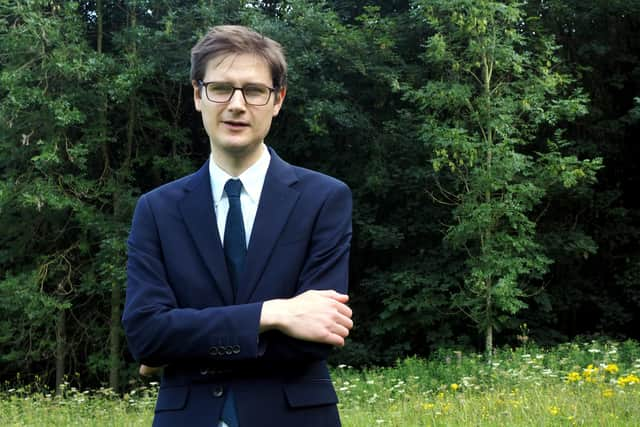‘Developments should include wild spaces’


In practise this means not just nice green parks and city centre urban drainage schemes, but prioritising native plants and animals, and making sure threatened species like water voles and turtle doves can survive and thrive.
In less than two years, there’ll be a local nature recovery plan for South Yorkshire, overseen by South Yorkshire Mayor Oliver Coppard, which will set out what needs to be done to reach that ambitious 2030 target.
Advertisement
Hide AdAdvertisement
Hide AdCouncil leader Tom Hunt pointed out that the council declared a ‘nature emergency’ in 2021, and that he thinks it’s “massively important” to get a plan to help the city’s wildlife begin to recover.


“It’s of concern that the biodiversity across the world and right here in our city is under threat,” he said. “Sheffield City Council is a significant landowner and manager of a range of different environments across our city, and we have to do what we can to protect them. We have to be a leader on this.”
The Sheffield and Rotherham Wildlife Trust’s 2018 ‘State of Nature’ report praised the work already done by thousands of local people in voluntary groups, as well as the council and conservation organisations, to protect the city’s wildlife, and highlighted the wide range of Sheffield habitats such as wet moors and meadow grasslands and ancient woodlands that were already pretty good for nature.
But it also said that the city’s wildlife has seen pressures similar to national trends, such as the loss of farmland birds, decreased insect numbers, and the danger of invasive species crowding out native plants and animals.
Advertisement
Hide AdAdvertisement
Hide AdLiz Ballard, chief executive of Sheffield & Rotherham Wildlife Trust, pointed out that having a good ecosystem of animals and wildlife around us will lead to good soil for farming, clean air and good health for us. As we become stretched by the pressures of climate change, we’ll need to have healthy ecosystems, she said.


In her view, our nature recovery plan should be about “protecting what you’ve got, looking at opportunities to improve what’s ok but could be be better, and then looking at creating new places for nature.”
Angus Hunter, ecologist and biodiversity officer of Sheffield Council, who’s worked on the nature recovery plan for Sheffield, said that on the ground we’ll need wild places, connected to each other by wild ‘corridors’ such as riversides, woodlands, green walking and cycling routes and unmown roadside verges.
Liz Ballard thinks that we should also look at particular species under threat, water voles, for example, and perhaps focus on improving their chances at particular sites rather than just trying to maximise biodiversity as a whole.
Advertisement
Hide AdAdvertisement
Hide AdConservationists want the 30 by 30 plan to be in the minds of all planners, developers and landowners, so our parks should have lots more meadow grasslands and well-managed woodlands, for example, and new developments should ensure they include wild spaces so animals can fly and walk and make their homes across the site. Individuals can help too, by looking at their homes and gardens to see how they can add 30% of ‘good for nature’ space there, such as bird boxes, wildlife ponds and garden meadows.


Thirteen years ago, the national coalition government published the Lawton Report which came up with a clear plan about what to do to help the nation’s wildlife recover from decades of degradation due to overuse of chemicals and pesticides and loss of habitats. Our wild green and blue spaces need to be ‘bigger, better and more joined up’ was the report’s simple conclusion.
Many in the conservation world wonder why it’s taking so long to put that into action, but it looks like the local nature recovery plans in Sheffield and across the country will be the first step.